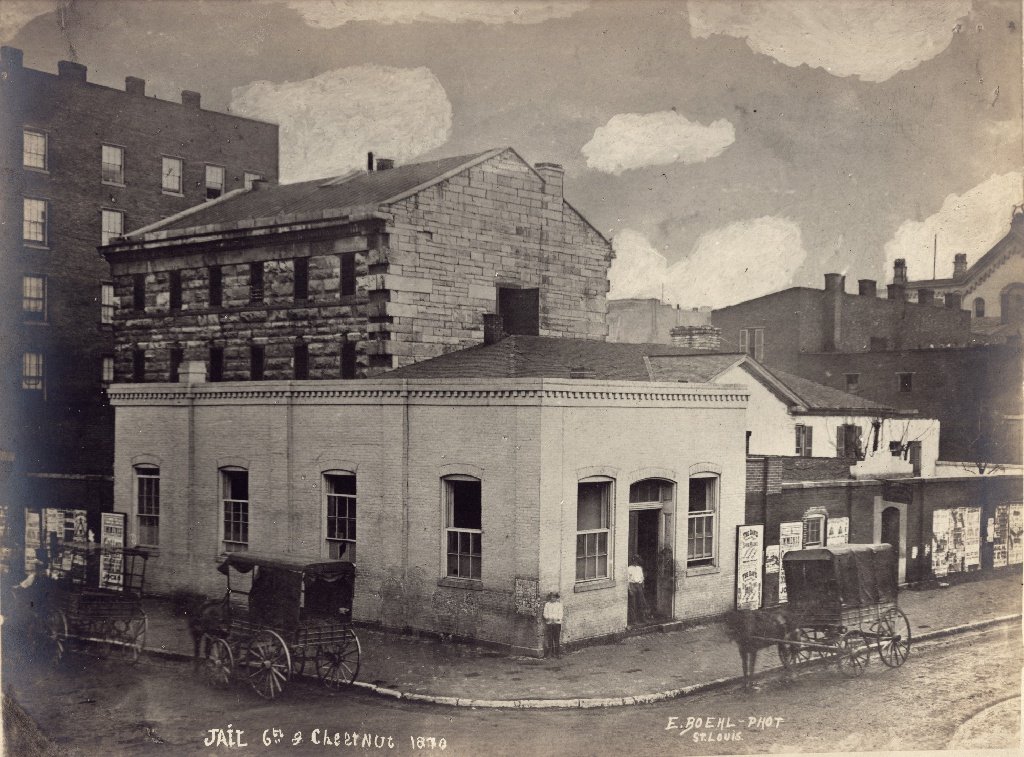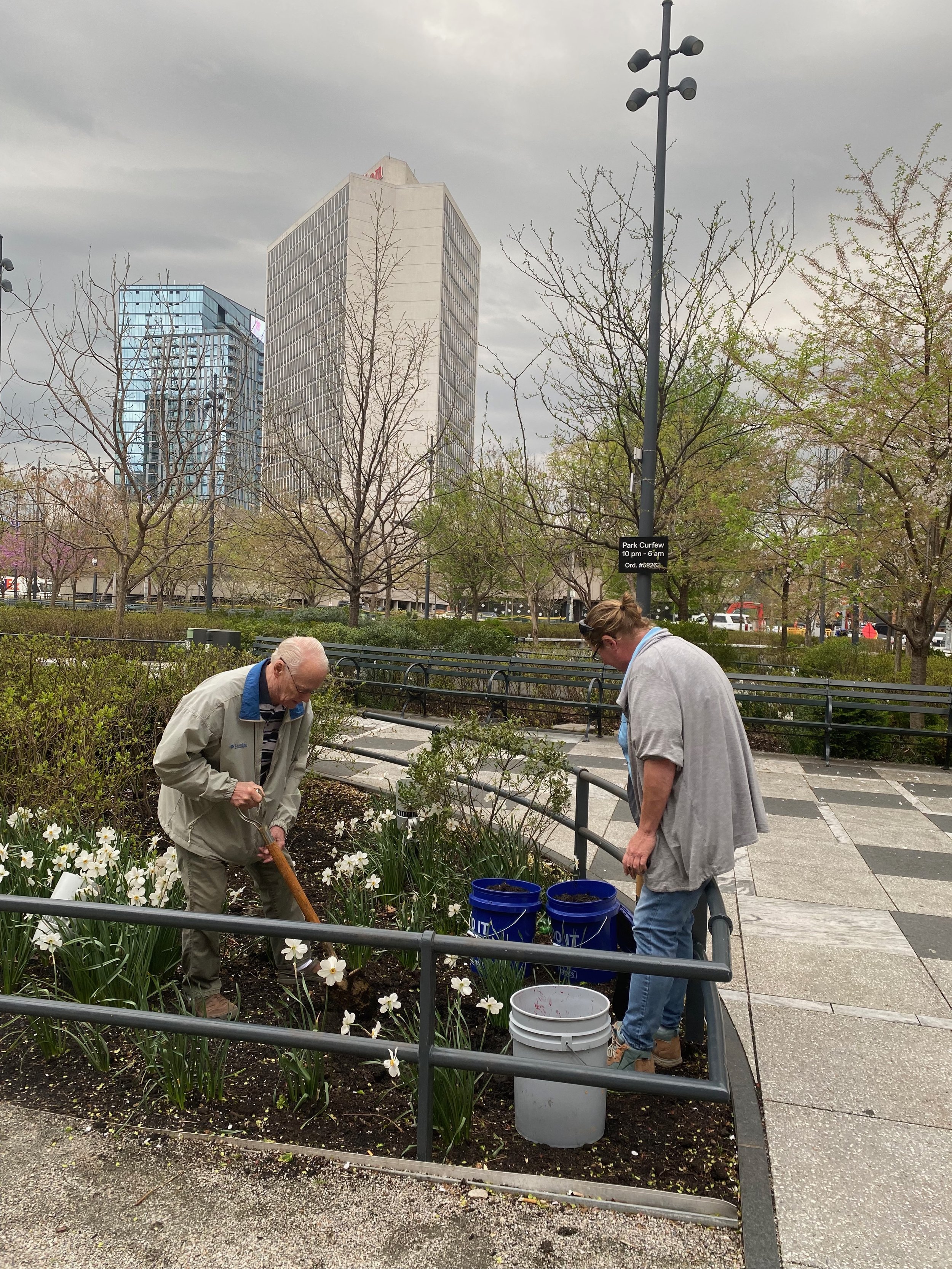
In 1836 Francis McIntosh, a free Black man, was abducted by a white mob from the St. Louis jail at 6th & Chestnut, chained to a tree a block away at 7th & Chestnut, and burned alive. No one was held responsible. The burned tree was left as a monument to racial terror.
The Lynching of Francis McIntosh.
Francis McIntosh was a free Black man who was lynched by a mob in 1836. The case is well-documented, in part for its incredible brutality. McIntosh was briefly jailed following a violent encounter with two St. Louis police that left one of them mortally wounded. A white mob abducted McIntosh from the jail, tied him to a nearby tree, and burned him alive as a crowd looked on. Historian Walter Johnson writes in The Broken Heart of America (2020, p. 77), “the burned tree [was] left standing on the corner of Seventh and Chestnut for years afterward, an attraction for whites traveling west and a grim warning for Blacks passing by,” illustrating one of the ways the lynching would continue to haunt the region, perpetuating racial terror, and corrupting the rule of law.
The 1836 lynching of Francis McIntosh occurred at the northwest end of what is now Kiener Plaza, a block from the site of the Old Jail (at 6th), and just blocks from the Old Courthouse, in downtown St. Louis.
An unknown artist’s depiction of the scene of the burning of Francis McIntosh (Source: Illustrations of the American Anti-Slavery Almanac for 1840)
The denial of justice.
The infamy of the McIntosh lynching relates to the brutality of the mob as well as a number of subsequent events. These include the killing of white abolitionist Elijah Lovejoy - whose condemnation of the lynching and subsequent miscarriage of justice enraged pro-slavery elements in St. Louis and Southern Illinois - and both mob killings being condemned in a speech by Abraham Lincoln. In his 1838 “Lyceum Address,” Lincoln warned that the institution of slavery and impunity for racist violence degraded the rule of law and legitimacy of the state, using the McIntosh lynching and the related assassination of Lovejoy as primary cases in point.
Key to our decision to commemorate this case is the denial of justice in the perpetration of lynching and the impunity of the mob. McIntosh was denied the presumption of innocence and other elements of due process and equal protection under law, and the mob went unpunished. Several participants in the McIntosh lynching were subject to a grand jury hearing over whether they should be indicted. The presiding judge named Luke Lawless, true to name, urged grand jurors to vindicate the mob. Judge Lawless warned a conviction would encourage abolitionists (whom he called “antislavery fanatics”). He sought to exculpate the mob with the excuse that members were “impelled by that mysterious, metaphysical, and almost electric phrenzy [sic]...beyond the reach of human law,” and therefore not criminally responsible. It worked - no one was punished for this murder. Elijah Lovejoy, outraged by this injustice, intensified his abolitionist work, for which constitutionally protected speech he was driven from St. Louis and later killed by a pro-slavery mob in Alton, Illinois, just across the Mississippi River.
The McIntosh lynching and impunity of the mob legitimized anti-Black violence and denials of equal protection in ways that were clear in the immediate aftermath, and remain still today. The coalition recently learned of a reported lynching two years later (1838) aboard a riverboat, after which a principal suspect - who had been detained when the boat docked in St. Louis - was released on grounds the McIntosh case established that white mob violence was not punishable by law. Noting the taste for violent punishment of Black transgressions, in 1841 entrepreneurs chartered the steamboat Eagle and sold tickets to Alton and St. Louis-based passengers wanting a closeup view of the hanging of four Black men on Duncan Island, just south of St. Louis. The echos would continue, in St. Louis, the region, and nationwide.
As we continue to struggle for equal protection under law, we remember the McIntosh lynching and associated denials of justice to reflect on this past and present injustice.
In preparation for the April 30 ceremony
Coalition volunteer Lloyd Klinedinst and Great Rivers Greenway Operations Supervisor Sarah Olmstead assist in gathering soil near the 1836 lynching site at the intersection of 7th and Chestnut.
Soil Collection Ceremony
On April 30, 2022 we commemorated the lynching of Francis McIntosh with a public Soil Collection Ceremony in Kiener Plaza, near the site of the 1836 lynching.
Francis McIntosh Soil Collection Ceremony, April 30, 2022, in Kiener Plaza across from the Old Courthouse.
Requiem for Francis McIntosh
On April 28, 2021 members of RJCSTL gathered in Kiener Plaza to remember the life & death of Francis McIntosh in a small ceremony to bring us together as we begin our Community Remembrance Project. You may read and listen to the requiem for Francis McIntosh delivered at that ceremony.
A short film on the McIntosh lynching and its legacy, including the 2021 vigil.




